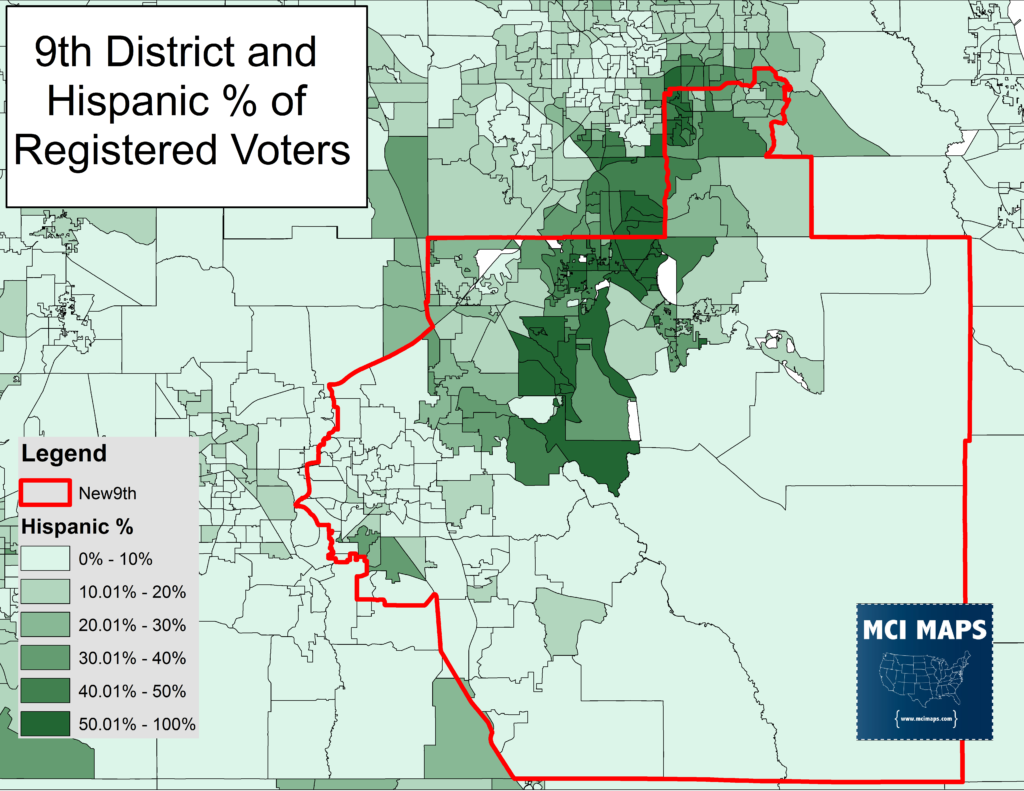(Note: This article was originally published in Politico Florida in 2015. Wayback machine link is here).
Matthew Isbell is a Democratic data consultant who will be providing exclusive analysis for POLITICO Florida over Florida’s two-week special redistricting session. He has become a well-known redistricting expert, drawing his own maps and offering in depth analysis on the process.
Earlier this week he analyzed the possibilities for the current session, which you can read here: http://bit.ly/1MerFFH
What follows is Isbell’s breakdown of the implications of the potential demographic shifts in Districts 9 and 10:
The Florida’s Legislature’s base map for congressional districts has been questioned because of the splitting of Hispanic voters in Orange County. Hispanic voters who live Congressional District 9 were moved into District 10, which also took in the African-American voters of Orange County that were drawn out of Congressional District 5.

During Tuesday’s hearings, the legislative staff explained its decision to add Hispanics to District 10. They argued that in doing so, they created a “minority coalition” seat that could see African-American and Hispanic voters team together to elect a representative of their choosing. They cited the ruling for Judge Terry Lewis, where it was argued that District 9, which was 41 percent Hispanic Voting Age Population under its 2012 boundaries, was not functionally a Hispanic district. The issue has been that many Hispanics are registered No Party Affiliation, thus not allowing them to vote in the Democratic primary that all but guarantees who will win in the 9th. The legislative staff opted to pair Hispanics with African-Americans in District 10. Their 9th and 10th districts are seen below.

However, there is one major flaw with the staff’s analysis. The redistricting software only has the racial makeup of the primaries (which are being used to determine if the seats are minority-access) up to 2010. The 2012 and 2014 primary data is not in the software. This is not staff’s fault but it is an important point.
I calculated the 2012 and 2014 primary makeup based on these lines.

As the data shows, Hispanics have little influence in either District 9 or District 10 regardless of which primary is looked at. In the 9th, which still retains some Orange County Hispanics and all of Osceola County, the Hispanic share is down to 20 percent of the Democratic primary. Meanwhile, the 10th District’s primary is dominated by African-Americans, with Hispanics getting little influence.

I reworked some of the lines to come up with a potential solution. I used the original District 9 lines adopted in 2012 and reworked District 10 to make sure it has a large number of African-Americans while losing Hispanics to the 9th.
Under my proposed lines, the District 9 Democratic primary is about 31 percent Hispanic, giving the community more clout in an election. The Hispanic share of the vote is continuously growing as well. It is not unreasonable to believe that the 2016 and 2018 primaries will see larger Hispanic shares as the population continues to grow. Meanwhile, the District 10 primary is still majority non-white. African-Americans make up just under 50 percent of the primary vote, with white voters in the low 40s.

The 10th in this proposal can still be defined as coalition district while the 9th is a Hispanic access seat. This is the optimal scenario for both Hispanics and African-Americans. Legislators should reconsider their plan for Central Florida, as other scenarios are very much viable.

